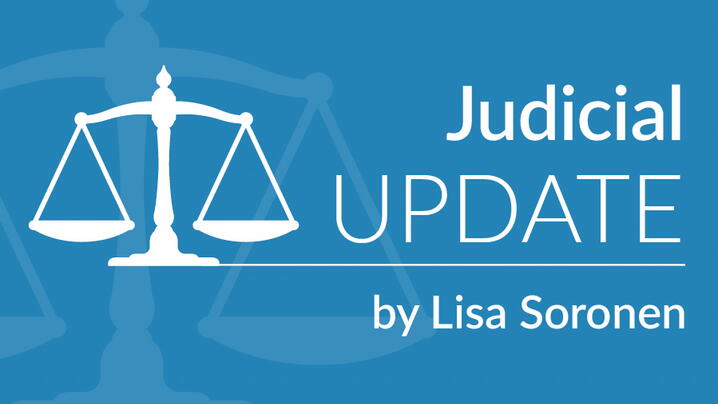
by Lisa Soronen, executive director, State and Local Legal Center
In Abbott v. Perez, a number of persons and advocacy groups challenged the Texas legislature’s 2011 state legislative and congressional redistricting plan, claiming it discriminated against African American and Hispanic voters in violation of the U.S. Constitution’s Equal Protection Clause and the Voting Rights Act.
In 2011, a three-judge district court issued a remedial redistricting plan that the U.S. Supreme Court vacated in 2012. The district court then drew another remedial redistricting plan that the state legislature adopted in 2013.
In this case, the challengers claim that the plan as adopted by the state legislature still has the “taint of discriminatory intent” of the 2011 legislative plan. The district court agreed, despite the fact that it is the author of the 2013 plan. The Supreme Court heard oral argument in this case.
Before deciding the merits of this case, the court must resolve whether it has authority to hear the case. The district court issued no injunction against the Texas legislature. Instead, it ordered the parties to engage in a remedial process where they would try to come up with new maps. If that process failed, presumably the district court would issue an injunction and redraw the maps itself (again).
The court’s more liberal justices, led by Justice Breyer, expressed the view that an injunction is necessary for the court to hear this case or the court will be inundated with appeals from non-final redistricting cases.
Justice Kennedy, often the swing vote in controversial cases, seemed to reject the argument that the order, in this case, had the “practical effect” of being an injunction. He asked one of the attorneys arguing for the challengers whether after the district court’s ruling the legislature could still use the plan for the 2018 elections. Yes, said the challenger’s attorney, and the legislature would not be held in contempt because no injunction prevents it from using the plan.
It seems more than possible the justices will not get to the merits of this case. If the court does, it is noteworthy that Justice Kennedy didn’t ask questions of any of the attorneys arguing about the merits of the case.
The attorneys defending the plan relied heavily on the argument that the legislature is presumed to be acting in good faith when redistricting and that the district court held “extensive proceedings” when redrawing the 2011 plan. More liberal Justices Kagan and Sotomayor pushed back, with Justice Kagan suggesting that the Texas legislature could not seek “safe harbor” from “just a preliminary injunction opinion” that didn’t weigh all the evidence and facts.
In the same vein, one of the challenger’s attorneys described the district court’s plan as “constrained,” “hedged,” and “not a thorough analysis.” While more conservative Justices Roberts, Alito, and Gorsuch asked questions of the challenger’s attorneys, one of them in particular talked for a long time without interruption. This silence may have been because the conservative justices suspect they will not need to rule on the merits in this case.
The Supreme Court will issue an opinion by the end of June 2018.
Related Content
Pennsylvania Legislature Must Redraw Congressional Maps. This 2018 blog post details the gerrymandering case in which the supreme court did not get involved.
What Is the Big Deal about the North Carolina Redistricting Case? In another 2018 blog post, the focus is on the redistricting case in North Carolina where the main issue is whether the courts can reject a redistricting plan based on partisanship.
Redistricting for the 21st Century. This document lays out the details of a community redistricting project that was done in Dallas, Texas, after the 2010 census.
New, Reduced Membership Dues
A new, reduced dues rate is available for CAOs/ACAOs, along with additional discounts for those in smaller communities, has been implemented. Learn more and be sure to join or renew today!
